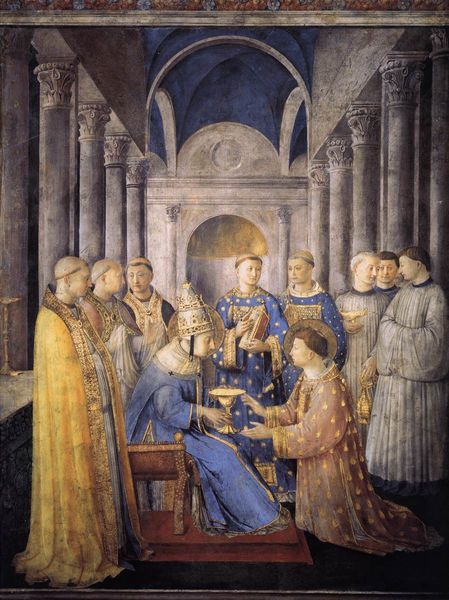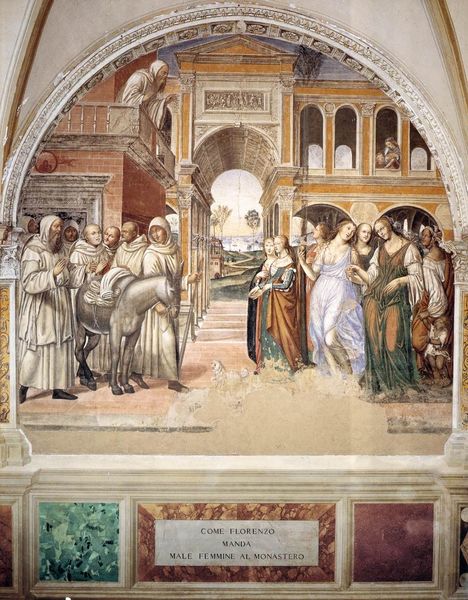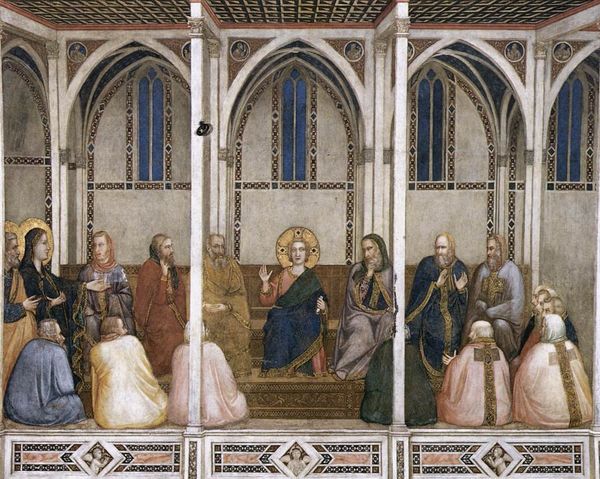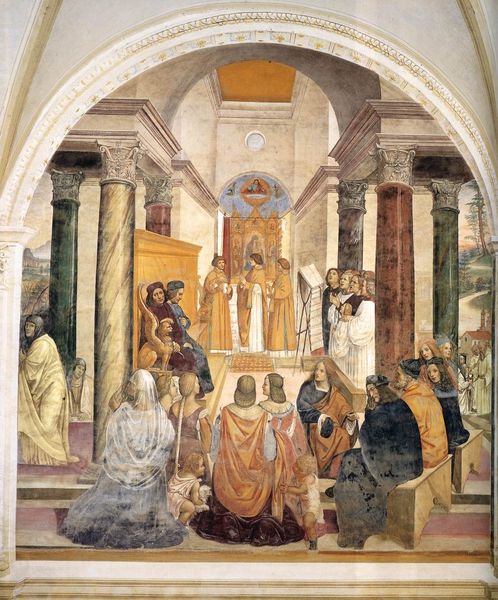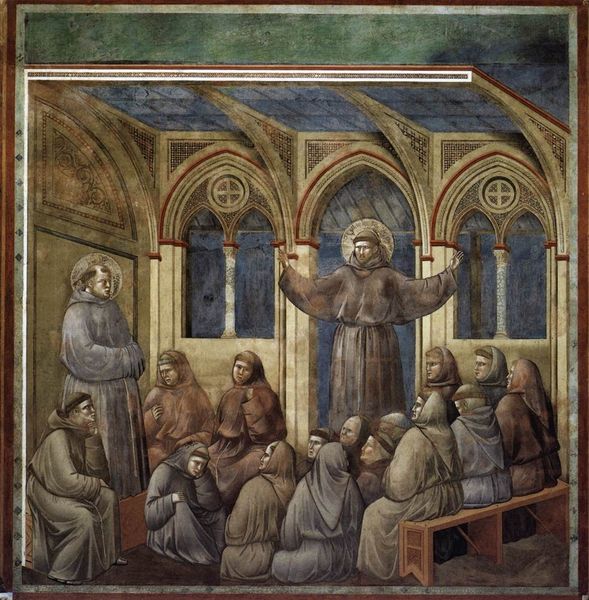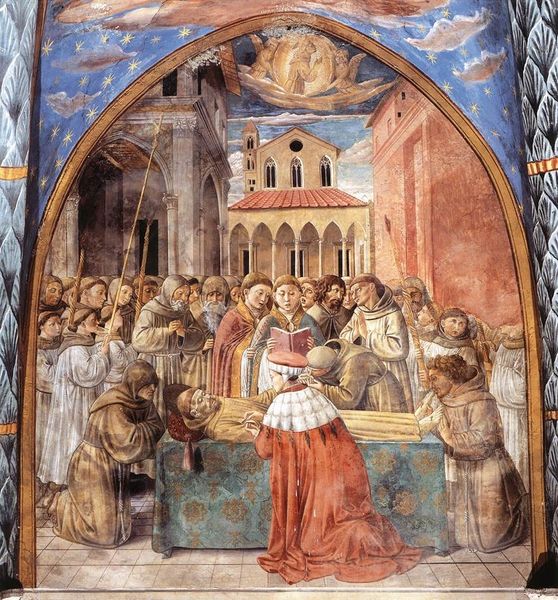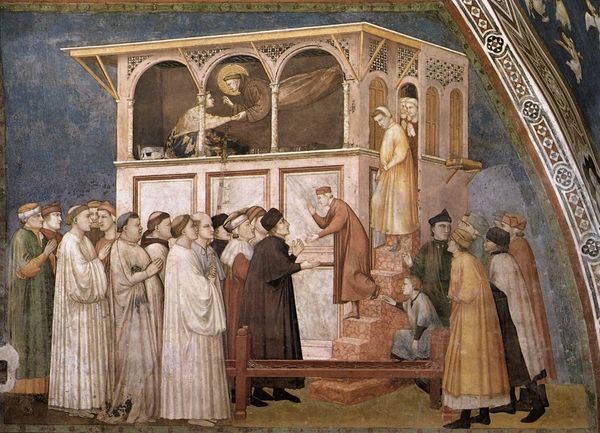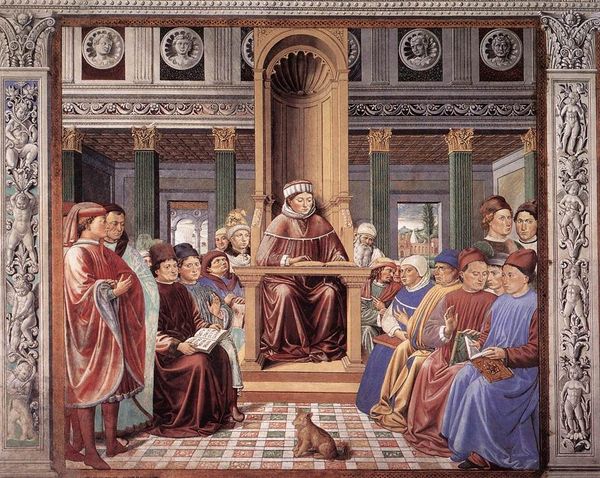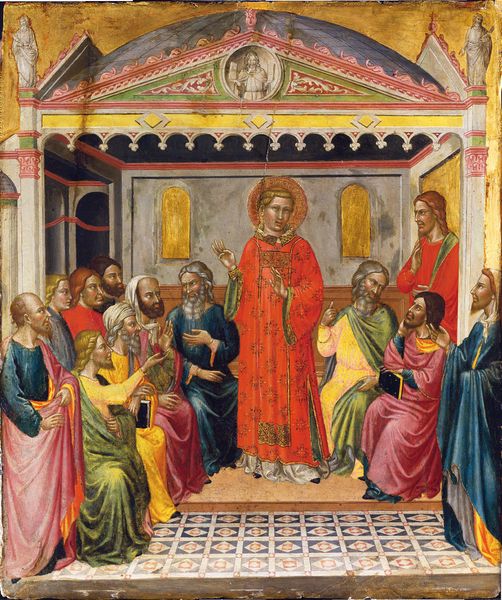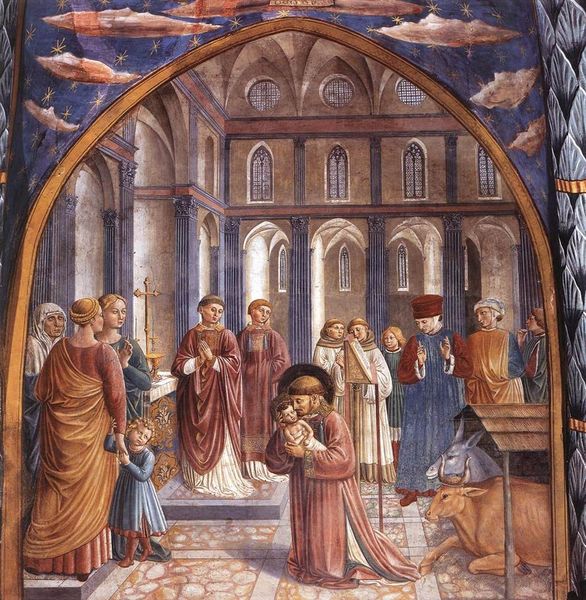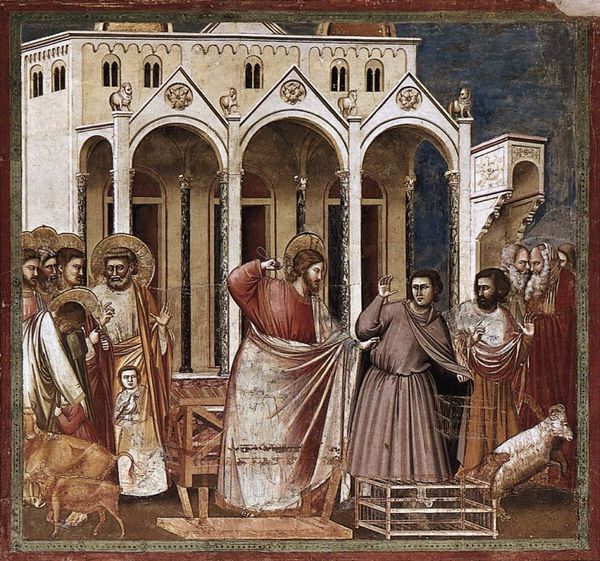
tempera, oil-paint, fresco
#
tempera
#
oil-paint
#
holy-places
#
historic architecture
#
fresco
#
traditional architecture
#
oil painting
#
history-painting
#
academic-art
#
italian-renaissance
#
historical building
Copyright: Public domain
Il Sodoma made this fresco, “The Confirmation of the Olivetan Order by the Bishop of Arezzo,” using ground pigments mixed with water on fresh lime plaster. Fresco painting is deeply physical. It involves careful preparation of the wall surface and the application of paint while the plaster is still wet. The artist must work quickly, completing each section before the plaster dries. The painting’s cool tonality and smooth surface speak to the artist’s skill in this demanding process. The fresco technique also lends this painting its sense of permanence. This durability mirrors the authority of the church, reminding us of the significant labor and investment involved in creating these monumental works. And, of course, the fresco painter was also reliant on the labor of others: those who quarried the stone, processed the lime, and prepared the walls for painting. Thinking about the materials, making, and social context allows us to better understand the complexities and layers within the work.
Comments
No comments
Be the first to comment and join the conversation on the ultimate creative platform.
